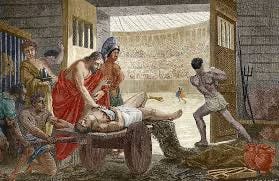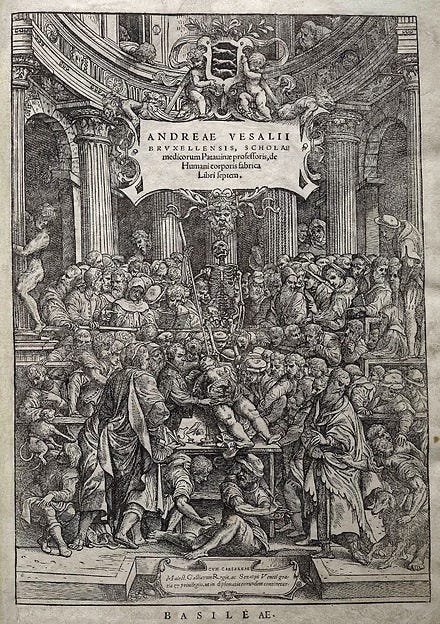The intricacies of the human body have intrigued the human mind for millennia. Despite humans’ relatively brief presence on Earth, the quest to understand our anatomy and physiology has spanned centuries, marked by periods of profound ignorance, superstition, and eventually, scientific breakthrough. Jonathan Kennedy, author of the phenomenal book Pathogenesis, remarked that if the history of the world were condensed into one calendar year, human existence would account for just the last five minutes before midnight. Let that soak in for a beat. We are transitory on this Earth, mere guests in the grand evolutionary narrative.
Yet, the miracles of modern medicine have emerged predominantly in the last 120 years. It was only seventy years ago that antibiotics began to dramatically reduce infection rates, forever altering human longevity, or so we thought.
These advancements were born from relentless research—trial and error, testing, and re-testing. Prior to this, much of medicine was left in the lap of the gods, quite literally. During the time of the Black Death, death was often attributed to sin, and survival to divine intervention. Bloodletting, inspired by the works of Galen, was a common practice.
Galen’s Dogma and the Four Humours
Galen, a Greek physician whose illustrious career spanned Ancient Greece and the Roman Empire, held a position of considerable influence in the development of medical science. Serving as the personal physician to the Roman Emperor Marcus Aurelius, Galen's medical teachings were deeply rooted in the theory of the four humours—blood, phlegm, black bile, and yellow bile. This theory, originally posited by Hippocrates, was based on the belief that human health and temperament were governed by the balance of these four bodily fluids.
Galen’s understanding of human physiology was a complex amalgamation of observation, limited experimentation, and philosophical reasoning. He postulated that the liver was the primary organ for blood production, which then flowed through the veins to distribute energy throughout the body. According to Galen, this blood was eventually consumed by the body's tissues and needed continuous replenishment. His doctrine held that an imbalance in any of the four humours could lead to disease, necessitating interventions such as bloodletting to restore balance. Bloodletting, in particular, aimed to expel excess black bile, which was considered a common cause of various ailments.
Galen's teachings dominated medical practice for over a millennium, largely because they were integrated into the fabric of both medical and philosophical education in the Western and Islamic worlds. His extensive writings, which survived the fall of the Roman Empire, became the cornerstone of medical knowledge during the Middle Ages. However, Galen’s theories often led to medical practices that were more harmful than beneficial. Bloodletting frequently exacerbated patients' conditions by causing significant blood loss and weakening their overall health.
It wasn’t until the Renaissance that Galen's teachings were seriously challenged. Andreas Vesalius, a Flemish anatomist and physician, spearheaded this scientific revolution. In 1543, Vesalius published De humani corporis fabrica (On the Fabric of the Human Body), a groundbreaking work based on meticulous dissections of human cadavers. Unlike his predecessors, Vesalius did not rely solely on the writings of ancient authorities. Instead, he conducted hands-on dissections to study human anatomy in unprecedented detail.
Vesalius’ observations led him to correct numerous errors in Galen's anatomical descriptions. For instance, Galen had based much of his work on the dissection of animals, leading to inaccuracies when applied to human anatomy. Vesalius exposed these discrepancies, demonstrating that Galen's descriptions of the heart, liver, and bones did not correspond accurately to human physiology. Vesalius showed that blood was not produced in the liver and consumed by the body, but rather that it circulated continuously—a concept that would later be fully elucidated by William Harvey in the 17th century.
Vesalius’ work marked a significant departure from the unchallenged acceptance of ancient texts. It laid the foundation for a more empirical approach to medicine, where direct observation and experimentation became the primary tools for understanding human anatomy and physiology. This paradigm shift not only advanced medical knowledge but also encouraged a more critical and investigative approach to science in general. Galen's contributions to medicine, while flawed, were pivotal in shaping early medical thought. His theories, particularly on the four humours, dominated for centuries until the advent of Renaissance thinkers like Vesalius, who dared to question and refine the established medical doctrines. This transition from dogma to empirical science represents one of the most significant turning points in the history of medicine, paving the way for the modern understanding of human biology and the continuous evolution of medical science.
From Superstition to Science: The Evolution of Medical Understanding
For centuries, the human body remained a mystery, often compared to exquisite works of art. Its intricate tissues and organs were marvelled at but not understood, with many misconceptions prevailing. The Renaissance period, known for its advancements in art and science, saw figures like Leonardo da Vinci meticulously studying the human form. Da Vinci’s anatomical drawings are renowned for their detail and beauty, yet even he, with his inquisitive mind, held beliefs that now seem ludicrous.
One of the more curious misconceptions was da Vinci’s belief that breast milk originated in the uterus and traveled to the mammary glands via a vein. This notion was widely accepted as medical fact in his time, despite the fact that no such vein was ever identified. This idea highlights the limited understanding of human physiology, even among the most brilliant minds of the period. It underscores how empirical evidence was often overshadowed by longstanding dogma and the absence of advanced scientific methods.
The mystery of the human body was compounded by religious and cultural taboos surrounding dissection. For many centuries, the Church prohibited the desecration of bodies, deeming dissection sacrilegious. This significantly hindered the progress of anatomical studies. Consequently, much of the knowledge about human anatomy was speculative, based on animal dissections or the teachings of ancient authorities like Galen, rather than direct observation and experimentation on human cadavers.
Despite these restrictions, some individuals risked severe punishment to advance medical knowledge. Grave robbing became a clandestine but crucial source of cadavers for anatomists and physicians. This grim black market operated in the shadows, with resurrection men supplying bodies to medical practitioners who dissected them in secret. These illicit activities, while morally and legally questionable, contributed to the gradual accumulation of anatomical knowledge. Notable examples include the infamous resurrection men Burke and Hare, who operated in Edinburgh during the early 19th century. Unlike typical grave robbers, they resorted to murder to meet the demand for bodies, selling the corpses to Dr. Robert Knox, a prominent anatomist. Their gruesome enterprise eventually led to Burke’s execution and Hare’s immunity in exchange for his testimony.
Leonardo da Vinci himself resorted to secretly dissecting human bodies, often working at night to avoid detection. His sketches reveal a deep appreciation for the complexity of human anatomy, with intricate depictions of muscles, bones, and organs. Although some of his conclusions were erroneous, his work laid the groundwork for future anatomical studies.
The surreptitious nature of early anatomical research eventually gave way to more formalised studies as attitudes shifted. By the 16th century, figures like Andreas Vesalius began to openly challenge established doctrines. Vesalius conducted public dissections and published De humani corporis fabrica in 1543, which corrected many of Galen’s errors and provided a more accurate representation of human anatomy. The transition from speculative theories to empirical science was not immediate, but it marked a pivotal shift in medical history. The Renaissance period's blend of art and science fostered a new appreciation for direct observation and experimentation, slowly dismantling centuries of misconceptions.
Today, the human body’s intricate tissues and organs are no longer shrouded in mystery, thanks to the pioneering efforts of early anatomists who dared to look beyond established beliefs. This journey from artful speculation to scientific accuracy exemplifies the evolution of medical knowledge. It underscores the importance of questioning established norms and the relentless pursuit of empirical evidence. The human body, once an enigma, is now understood with a level of detail and precision that continues to grow, driven by the same curiosity and dedication that motivated da Vinci and Vesalius centuries ago.
Grave robbing during this time was not just a sporadic crime; it became an organised, with physicians deeply entwined in the illicit activities. The lucrative demand for cadavers created a black market where bodies were not only exhumed but also obtained through more sinister means. The case of Burke and Hare exemplifies this dark chapter in medical history. Their willingness to commit murder to supply Dr. Knox underscores the desperate lengths to which both criminals and medical professionals would go to advance anatomical knowledge. This grim partnership between resurrection men and anatomists reflects the complex and often unethical intersections of science and crime during a period when legal avenues for anatomical research were severely limited.
The historical reliance on grave robbing and the subsequent transition to legalised dissection highlight the profound changes in medical practice and ethical standards. Today, body donation programs ensure that medical students and researchers have ethical access to human bodies, fostering advancements in medical education and practice. This evolution from clandestine dissections to transparent and regulated practices represents a significant advancement in both medical science and societal ethics, ensuring that the pursuit of knowledge respects human dignity and integrity.
I possess The Atlas of Human Anatomy and Surgery by French anatomist J.M. Bourgery, a cherished tome completed during a time when dissection was illegal. Bourgery's reliance on grave robbing underscores the lengths to which scientists would go to further medical knowledge.
From Grim Practices to Modern Marvels
Today, donating one’s body to science is considered an honour, a selfless act that significantly contributes to the advancement of medical knowledge and education. This practice has transformed the landscape of medical training and research, providing invaluable resources for future generations of healthcare professionals. Unlike the clandestine dissections of the past, modern anatomical studies are conducted with full transparency and respect for the donors, reflecting a profound shift in both ethical standards and scientific practices.
One of the most remarkable advancements in modern medicine is the advent of enhanced digital anatomy and three-dimensional imaging. These technologies allow us to observe and understand disease processes in unprecedented detail. Through high-resolution imaging techniques such as MRI, CT, PET scans, and 3D reconstructions, we can visualise the human body’s intricate structures and functions with remarkable clarity. This digital revolution enables medical professionals to diagnose conditions with greater accuracy, plan surgeries with enhanced precision, and tailor treatments to individual patients.
The integration of robotics and collaborative robots (cobots) into surgical practices represents another significant leap in medical innovation. Robotic surgery systems, such as the da Vinci Surgical System, offer unparalleled precision, control, and flexibility, allowing surgeons to perform complex procedures through minimally invasive techniques. These advancements reduce recovery times, minimise surgical risks, and improve overall patient outcomes. Cobots, designed to work alongside human surgeons, enhance the efficiency and safety of surgical operations, ensuring that even the most intricate procedures can be executed with the highest level of accuracy. Hip and knee arthroplasty with the use of cobots reduce excessive bone resurfacing by robots guided milling of the bones resurface is something which has become normal in the modern operating theatre. Minimising trauma, increasing recovery outcomes and moving total joint replacement to a day surgical procedure.
Despite these technological advancements, the Emperor of All Maladies, cancer, continues to challenge the medical community. Cancer's complexity and multifaceted proliferation of the body’s cellular space, characterised by its ability to adapt, resist treatment, and metastasise, makes it a formidable foe. However, each day brings new discoveries that inch us closer to understanding and eventually, maybe, conquering this disease.
Advances in genomics and personalised medicine are at the forefront of the fight against cancer. By decoding the genetic makeup of tumours, researchers can identify specific mutations and tailor treatments to target these abnormalities. This approach, known as precision oncology, has led to the development of targeted therapies that are more effective and less toxic than traditional chemotherapy. Immunotherapy, which harnesses the body’s immune system to attack cancer cells, has also shown promise in treating various types of cancer, offering new hope for patients with previously incurable forms of the disease.
The development of liquid biopsies, which involve detecting cancer-related biomarkers in blood samples, is another groundbreaking innovation. This non-invasive technique allows for early detection, monitoring of treatment response, and identification of residual disease, potentially transforming cancer care by enabling timely and more precise interventions.
Moreover, artificial intelligence (AI) and machine learning are being integrated into cancer research and treatment. AI algorithms can analyse vast amounts of medical data to identify patterns and predict outcomes, assisting clinicians in making more informed decisions. These technologies are also used to develop predictive models for cancer progression and response to treatment, further personalising and optimising patient care.
Despite these advancements, cancer research faces numerous challenges, including the need for more effective treatments for metastatic disease and the ability to overcome drug resistance. The heterogeneity of cancer, where different cells within the same tumour can exhibit diverse genetic profiles, complicates treatment strategies. Additionally, ensuring equitable access to cutting-edge therapies remains a critical issue, as disparities in healthcare can limit the benefits of these innovations for many patients.
A New Era of Medical Discovery
We are fortunate to live in this epoch of medical innovation. With each passing day, new breakthroughs emerge, propelling us further into a future where diseases that once seemed incurable are now manageable or even preventable. This era of unprecedented advancement is built on the foundations laid by our predecessors—those who dared to question, explore, and innovate despite the limitations of their times.
As we continue to unravel the mysteries of the human body, we stand on the shoulders of giants. These pioneers of medicine, from Hippocrates and Galen to Vesalius and Harvey, challenged the status quo and expanded the boundaries of medical knowledge. Their willingness to question established doctrines, conduct rigorous experimentation, and embrace empirical evidence paved the way for the scientific methods that underpin modern medicine.
The journey from the superstitions of the past to the scientific marvels of today is a testament to human ingenuity and perseverance. In ancient times, illnesses were often attributed to supernatural forces or imbalances in the humours. Treatments were based on tradition and anecdote rather than evidence, and the understanding of human anatomy was rudimentary at best. However, the curiosity and determination of early scientists and physicians sparked a gradual shift towards observation, experimentation, and documentation.
The Renaissance period marked a significant turning point in this journey. Figures like Leonardo da Vinci and Andreas Vesalius revolutionised the study of anatomy through meticulous dissection and detailed illustrations, revealing the inner workings of the human body with unprecedented accuracy. Their work laid the groundwork for future discoveries and inspired subsequent generations of medical researchers.
In the centuries that followed, the pace of medical progress accelerated. The development of the scientific method, coupled with technological innovations, enabled more precise and comprehensive studies of human biology. The discovery of microorganisms by pioneers like Louis Pasteur and Robert Koch transformed our understanding of disease, leading to the development of vaccines and antibiotics that have saved countless lives.
The 20th century brought even more remarkable advancements. The discovery of DNA's structure by Watson and Crick unveiled the blueprint of life, opening new avenues for genetic research and personalised medicine. Innovations in imaging technology, such as X-rays, MRI, and CT scans, allowed us to peer inside the human body without invasive procedures, revolutionising diagnostics and treatment planning.
Today, we are witnessing the dawn of a new era in medicine, characterised by the integration of digital technology, artificial intelligence, and biotechnology. Enhanced digital anatomy and three-dimensional imaging provide detailed insights into disease processes, enabling more accurate diagnoses and tailored treatments. Robotic surgery systems offer unparalleled precision, reducing recovery times and improving patient outcomes. AI and machine learning are transforming medical research, helping to identify patterns and predict outcomes with remarkable accuracy.
The complexities of the human body have always fascinated us, and our relentless quest for knowledge drives us to explore and understand these intricacies. As we continue this journey, we honour the legacy of those who paved the way. Their contributions remind us of the importance of curiosity, perseverance, and a willingness to challenge established norms.
Our journey from mysticism and superstition to modern medicine reflects our collective determination to improve human health and well-being. Each discovery builds on the last, creating a cumulative legacy of knowledge and innovation that benefits us all. As we forge ahead, we do so with the understanding that our efforts today will shape a healthier future for generations to come, continuing the work of those who came before us and inspiring those who will follow.















